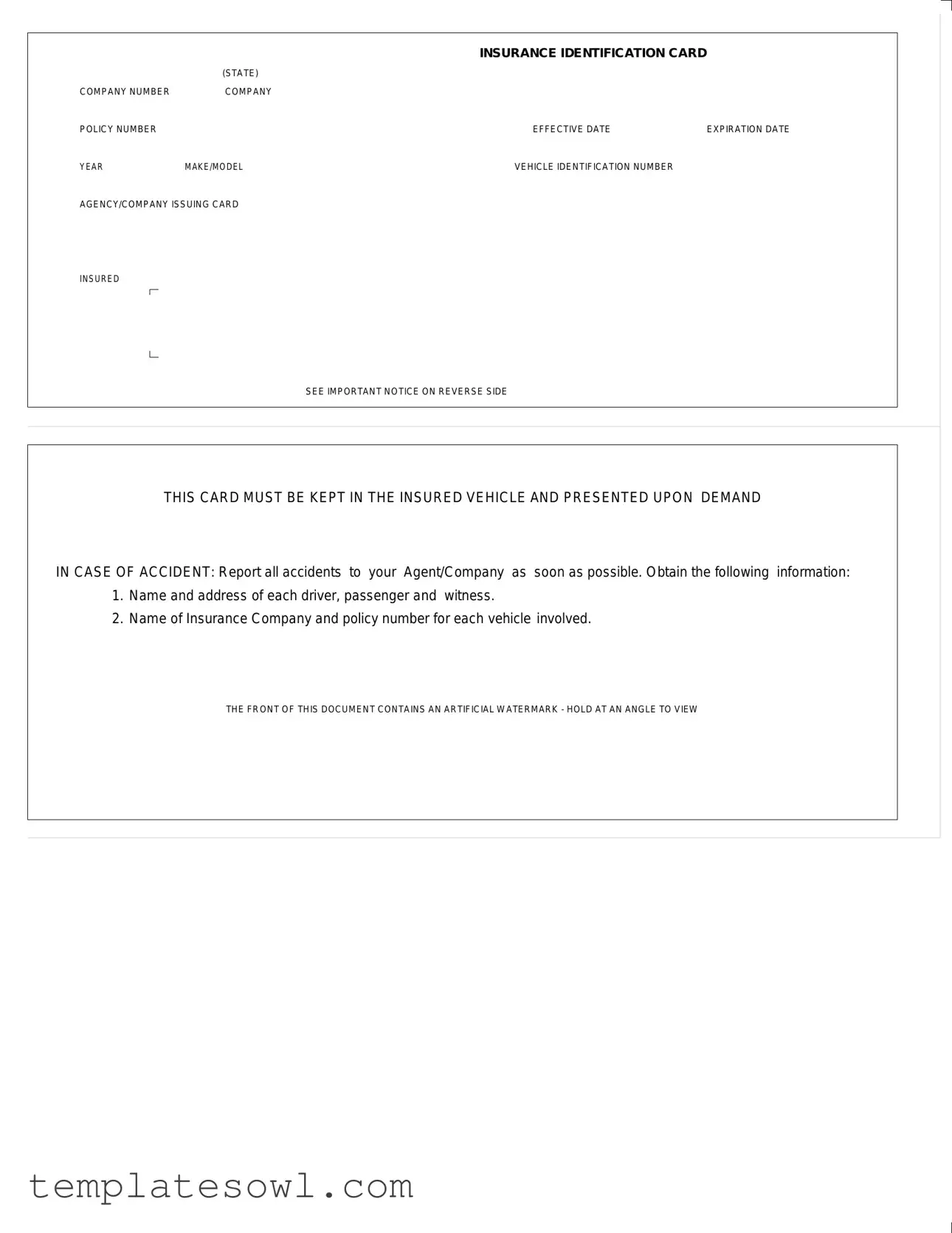What is the purpose of the Auto Insurance Card?
The Auto Insurance Card serves as proof of insurance for your vehicle. It must be kept in the vehicle at all times and presented upon request during traffic stops or when involved in an accident.
What information is included on the Auto Insurance Card?
The card displays critical details, including the insurance company number, policy number, effective and expiration dates, the year, make and model of the vehicle, the vehicle identification number (VIN), and the agency or company issuing the card.
Can I use a digital version of the Auto Insurance Card?
Many states accept digital versions of auto insurance cards, provided they can be easily accessed and presented when necessary. However, it's advisable to check your state's specific regulations regarding digital insurance proofs.
What should I do if I lose my Auto Insurance Card?
If you lose your card, contact your insurance agent or company immediately. They can issue a replacement card, which you can use until you receive the new one.
What actions should I take after an accident?
After an accident, report it to your insurance agent or company as soon as possible. Gather information from all parties involved, including names, addresses, and insurance details. Document the accident scene by noting details from witnesses, passengers, and drivers.
What is the significance of the artificial watermark on the card?
The artificial watermark on the front of the card is a security feature. It can be viewed clearly by holding the card at an angle. This watermark helps to prevent fraud and ensures that the card is legitimate.

